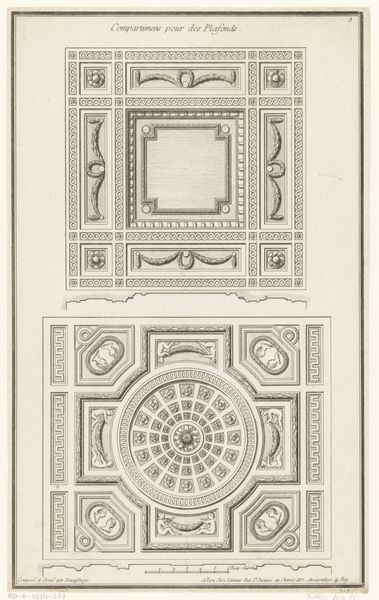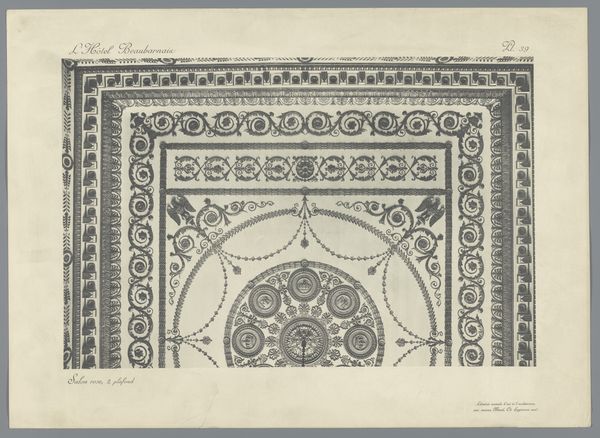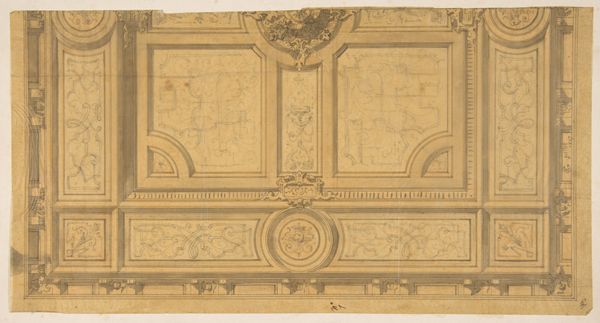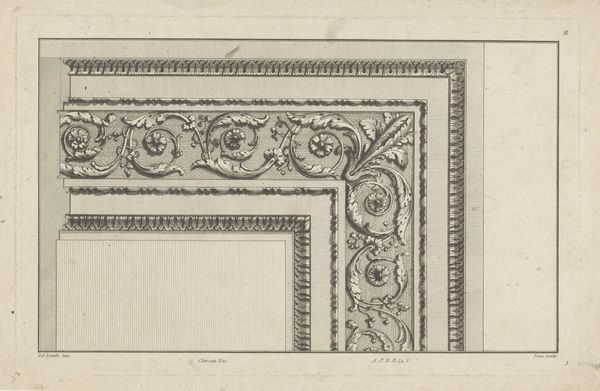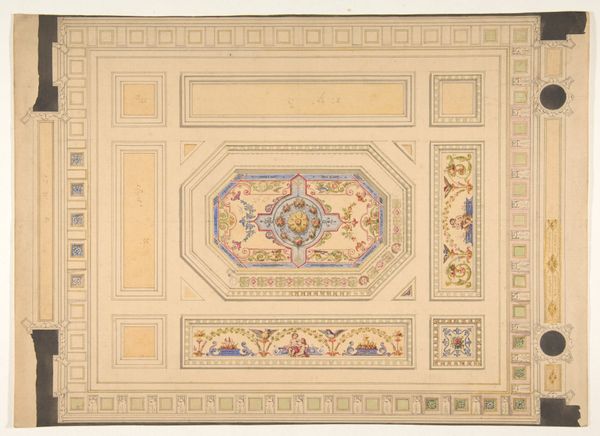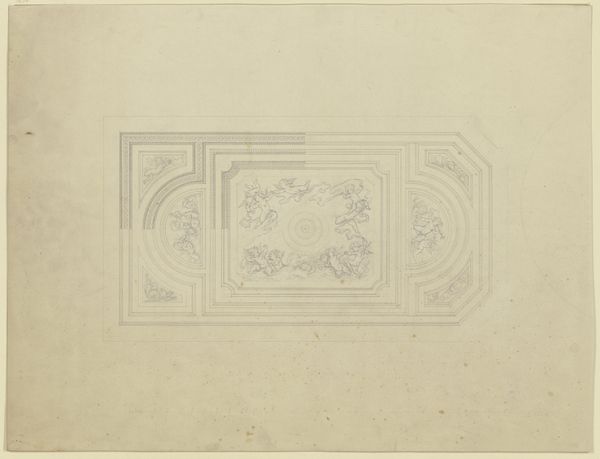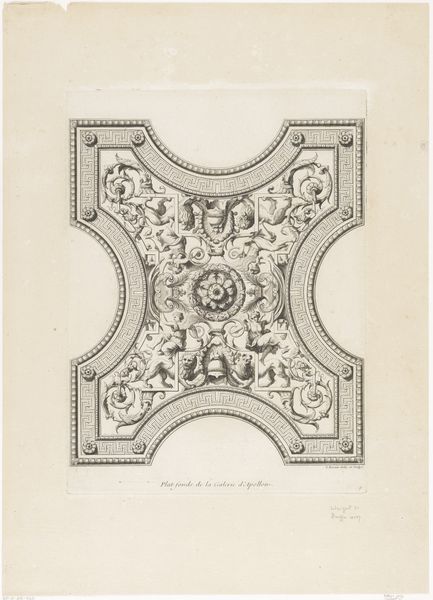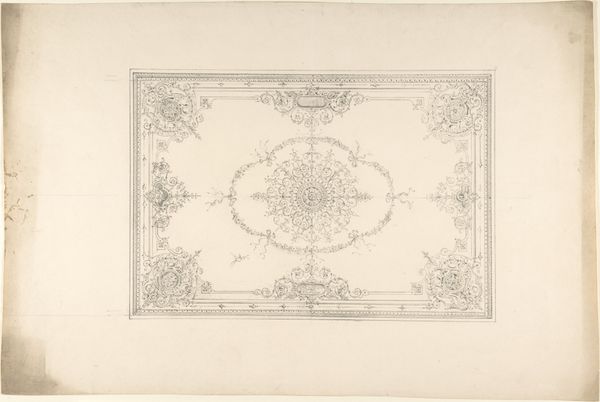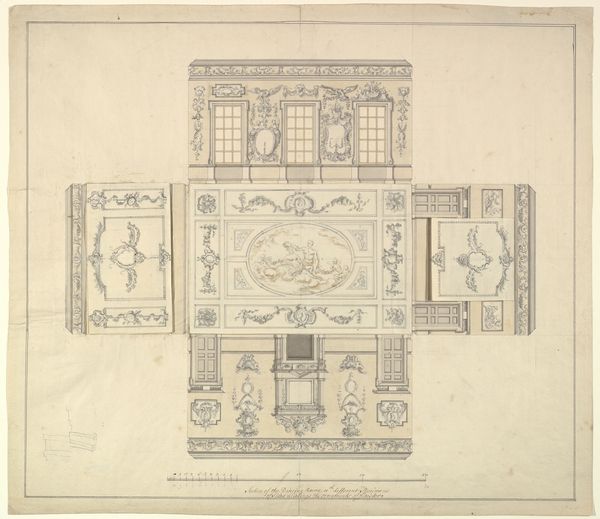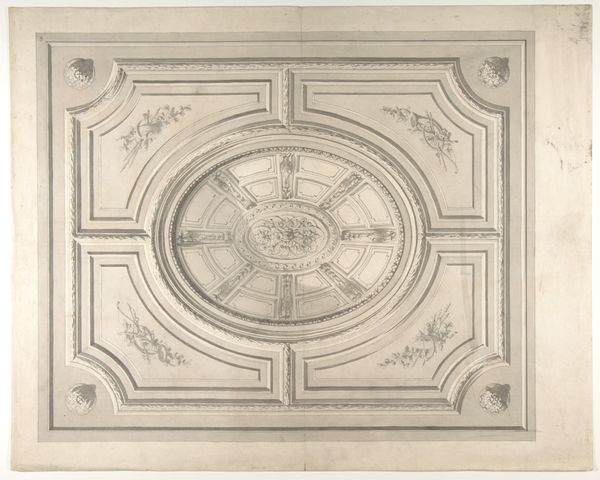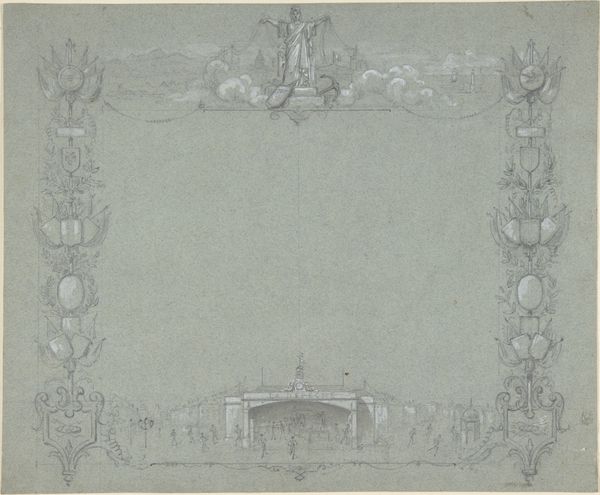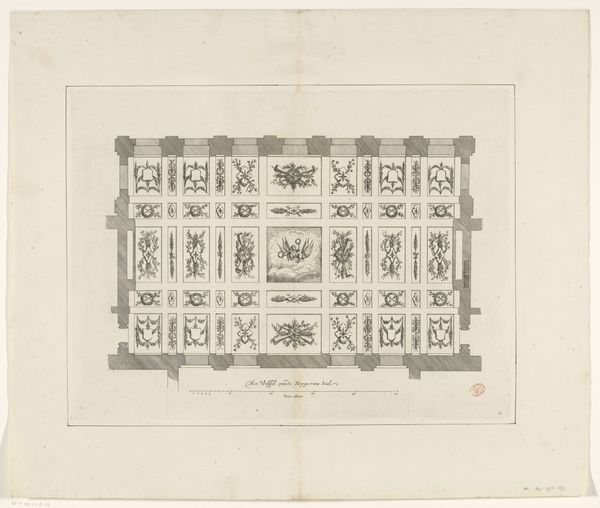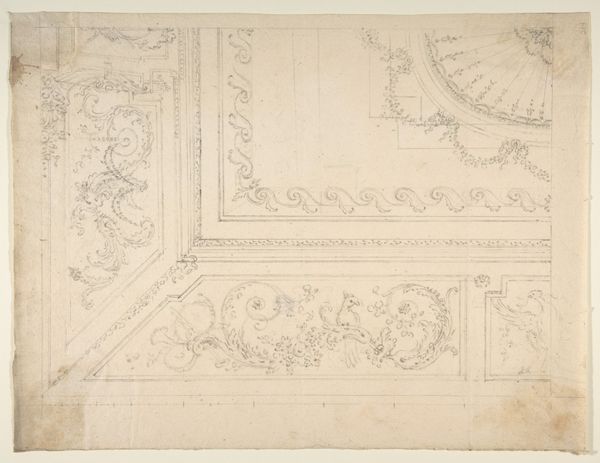
Design for Ceiling at Kirtlington Park, Oxfordshire 1742 - 1753
0:00
0:00
Copyright: Public Domain
Editor: This is "Design for Ceiling at Kirtlington Park, Oxfordshire" created between 1742 and 1753 by John Sanderson. It’s a drawing made with ink and engraving on paper, currently at the Met. I am struck by the formal, almost mathematical precision. What's your take on this piece? Curator: Considering it within its socio-political context, we see Neoclassicism being embraced as a visual language for power and order by the elite. Think about it: the aristocracy constructing these grand estates, like Kirtlington Park. Sanderson's design contributes to a narrative of refined taste and dominion. What do you think the choice of geometric forms contributes? Editor: Well, the rectangles and that central oval definitely lend themselves to that sense of order and control you mentioned. And I suppose that's a statement in itself. Curator: Precisely! These forms don't arise in a vacuum. Neoclassical designs, circulated through prints and drawings, offered a visual program adopted to establish cultural and political authority. These ceiling designs became signifiers of belonging to a privileged class with connections to powerful, classical ideals. To consider this piece is to examine class structures in 18th century Britain. How does knowing its eventual purpose change your impression? Editor: Knowing it's for a ceiling... I guess it becomes less abstract. It's not just geometry; it's about creating an environment that reinforces particular social values and displays wealth. I had not thought of the architecture of spaces themselves enforcing certain sociopolitical ideals! Curator: Indeed! Analyzing ceiling design invites exploration into how buildings are spaces shaped by class and aspirations of its patrons. Reflecting on its cultural position helps unveil complexities of design beyond just geometry. Editor: Absolutely. Thanks, I see so much more in this than I initially did. Curator: A pleasure. Considering artwork as a visual text embedded in history allows us deeper interpretation.
Comments
No comments
Be the first to comment and join the conversation on the ultimate creative platform.
